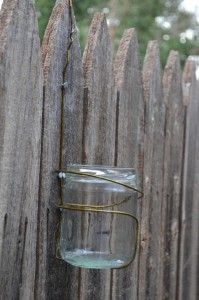Every week we feature a fun and/or educational activity you can try at home or in the classroom. We have begun mailing our Gift Catalog for this year’s holiday season and will be featuring activities that highlight the items available.
Life for many farmers hinges on access to water—how much it rains, when it rains and how to store it. Water access determines how farmers irrigate their crops and helps determine their land's productivity. Heifer International teaches communities how to manage their water resources through sustainable agricultural techniques.
Sustainable water-resource use is an issue of growing importance in industrialized nations as well, due to the earth's growing population and climate change. A homemade rain gauge can measure water in your yard and help you determine if you are over- or under-watering your lawn. Plus, it's a fun way for kids to see how much rain falls in a storm.

Make Your Own Rain Gauge Materials
Begin with a clean jar. Make sure to peel away any stubborn labels and residual adhesive. Check and make sure the jar has a flat bottom on the inside, that it isn't bowed or indented in any way like the bottom of a plastic soda bottle. This will affect your measurement's accuracy.
Press the ruler flat against the side of the jar, making the bottom of both flush with a flat surface. Mark measurements with the marker or tape the ruler to the jar with clear tape.
Next, tape or glue the plastic funnel on top of the jar with the narrow end inside if you choose to include it. Secure the gauge by using pliers to straighten the wire hanger. Wrap part of the wire around the mouth of the jar and attach to a pole. Alternatively, you can place your gauge on the ground, just make sure it is secure enough that wind won't knock it over. Place it away from trees and out from under buildings—the runoff will affect your readings. The important thing here is to have the jar level.
Measure away.
For more details on how to make your own rain gauge, visit the Polka Dotted Turtle website.
Read how hand-pumped wells deliver fresh water to a community in Vietnam.